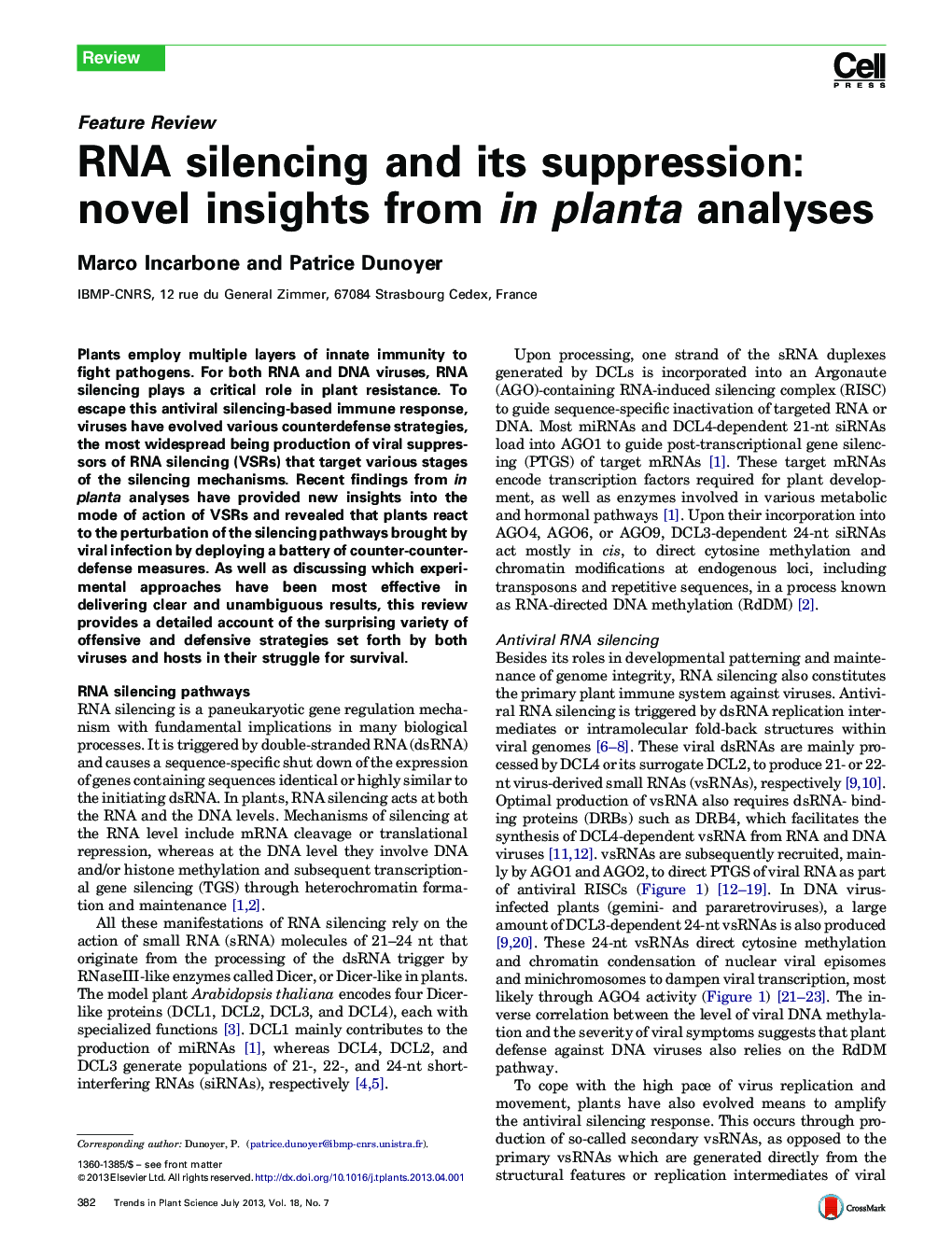| Article ID | Journal | Published Year | Pages | File Type |
|---|---|---|---|---|
| 2826258 | Trends in Plant Science | 2013 | 11 Pages |
•RNA silencing in plants is one of the main antiviral defenses against viruses.•Viruses inhibit RNA silencing reactions through production of VSRs.•Recent results have provided novel insights into VSRs’ mode of action.•Plants have developed strategies to contrast the perturbation induced by VSRs.
Plants employ multiple layers of innate immunity to fight pathogens. For both RNA and DNA viruses, RNA silencing plays a critical role in plant resistance. To escape this antiviral silencing-based immune response, viruses have evolved various counterdefense strategies, the most widespread being production of viral suppressors of RNA silencing (VSRs) that target various stages of the silencing mechanisms. Recent findings from in planta analyses have provided new insights into the mode of action of VSRs and revealed that plants react to the perturbation of the silencing pathways brought by viral infection by deploying a battery of counter-counterdefense measures. As well as discussing which experimental approaches have been most effective in delivering clear and unambiguous results, this review provides a detailed account of the surprising variety of offensive and defensive strategies set forth by both viruses and hosts in their struggle for survival.
